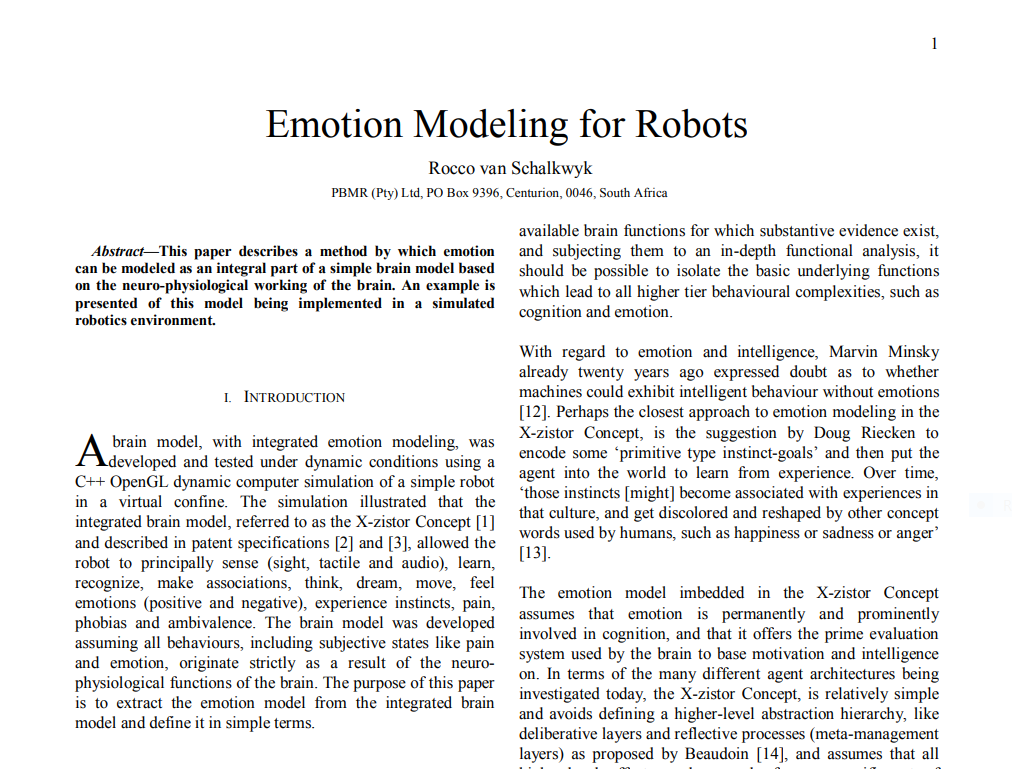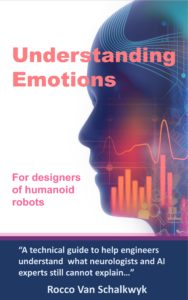Summary of a new book released by an author from the Xzistor LAB:
Title: Understanding Emotions: For designers of humanoid robotics
Author: Rocco Van Schalkwyk
For any questions around this publication – contact Rocco.
Here is a link to the original scientific paper by the author on which this book was based (click the title):

In the book Understanding Emotions: For designers of humanoid robots the author, Rocco Van Schalkwyk, translates his own paper (above) into a short guide of 45 pages using layman’s terms. This makes it an easy read for researchers and students.
As part of the author’s research into the brain, and the brain model that he has developed to control robots, he has discovered a really simple way to explain emotions. The purpose of this compact guide is to convey this simple approach to those who are intrigued by emotions and able to read a scientific paper or textbook.
The author’s simple approach will help the reader avoid the seemingly unending debate amongst neurologists, psychologists and philosophers as to what emotions are. It offers a practical ‘engineering-type’ explanation of how emotions work in the brain and how we can build machines with real humanlike emotions. The guide includes a short piece of pseudo code showing how the functionality can be incorporated into a computer program that provides physical robots and virtual agents with artificial emotions.
The author also provides links to his research website where the approach had been successfully implemented as part of brain model programs controlling virtual and physical robots.
Proud product of the Xzistor LAB now available on Amazon!
Author is on Researchgate here – www.researchgate.net/profile/Rocco-Van-Schalkwyk. And view his Amazon author page here Rocco Van Schalkwyk on Amazon.

